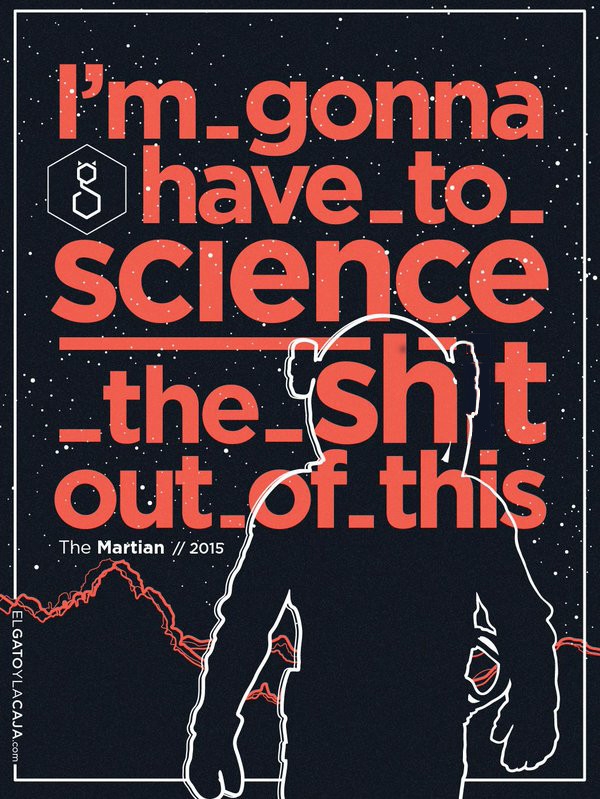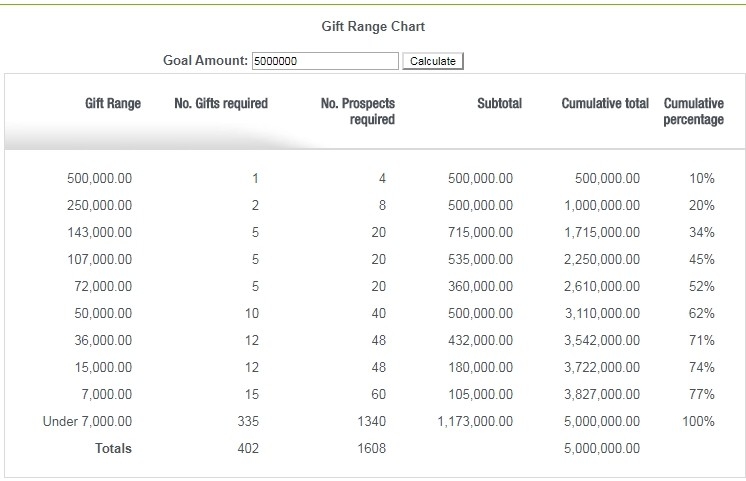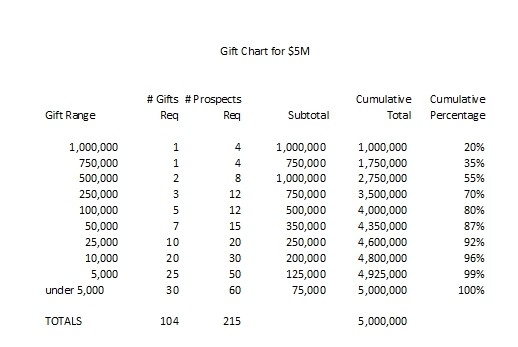
There have been numerous times that I have been asked to come up with a campaign plan. The plan usually boils down to how are you going to raise the money? The most important tool that is used by fundraisers today is the Gift Standards Chart. This is where one determines what the lead gift is, how much will be brought in by each level (leadership, major gifts, special gifts, community phase, etc.). The successful campaign is predicated by asking for a specific amount of money (that’s what separates a campaign from a collection). The gift standards chart should look like a pyramid (with fewer gifts at the top level and progressively more gifts at lower levels). These charts have been created after years of analyzing campaigns and knowing what gifts to ask for. So why not ask for these gift amounts in the first place and implement some reverse engineering for the campaign?

Let’s look at how to create one of these. A good start would be the gift range calculator found on Blackbaud’s website. Let’s take the case for a $5 million campaign. After inputting the campaign goal, the chart is as follows:

That is a good start, but needs much more tinkering — I have never seen a gift of $143,000 in my fundraising life, let alone 5 of them!!!! The lead gift (I have found) is more likely to represent at least 20% of the campaign goal. To put a number less than that puts undue pressure on the gift levels below (i.e. you would need more gifts at $100,000, etc.) and by putting that pressure at lower levels, you will quickly run out of qualified prospects. As well, this calculator says that you will need 4 prospects for every gift (regardless of gift size). I would contend that the number of prospects required would start at a 4:1 for the lead gift, but may even drop to 2:1 for the smaller gifts.
So, build the chart downwards by cutting the gift size and increasing the number of donors at each level. Remember that approximately 80% of the goal will come from 20% of the donors.

So, when all is said and done, you have a campaign for $5 million from approximately 100 gifts. And that 80/20 rule? The Top 19 gifts in this chart represent 87% of the goal. This looks similar to the Blackbaud version, just fine-tuned to better reflect reality. Reverse engineering at its best!
When your campaign is launched, fundraise from the top down, not the bottom up. If all four of your $750,000 prospects decline, it puts a lot of pressure on the gifts below.
L’chaim
jack




